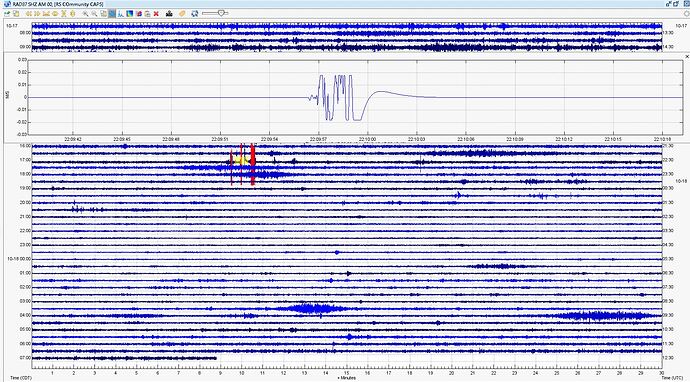Creating human-made quakes - 2nd try is successful for Team Fink. Note the difference in amplitude and wave attenuation btwn the first group of waves (jumping 4 ft away f/ the sensor) & the last group (jumping 2 feet away). We observed (1) placing the RS within 2 feet of where the jumper is located, we “max out” the geophone sensor, therefore we need to keep the RS and the jumper at least 4 feet away from each other to avoid this scenario and any possible damage; and (2) when we view the jumping “quakes” in SWARM, and extract a seismogram by highlighting the time range of interest, the velocity “baseline” does not return to a value of zero, however after a couple of hours pass the “baseline” returns to its normal value = 0 and this is simply a deceiving visual effect produced by SWARM - whew!
Did you have them jump just once or was it for a set amount of time? And it looks like you had them broken up into groups? I’d like to try this with my classes in the spring when we learn about earthquakes.
Hello BRCSD - good morning! In this scenario, I had one kid continuously jump for 10 seconds for both recordings shown (the first and last group of “spikes”). The middle set of “spikes” is me moving the Raspberry Shake to a new location. For me, this was a test run of the experiment to ensure it would give me results I need for teaching, and it did >>>> we can observe the change in amplitude of the waves due to the jumper being close/far to the machine. The sensor is very sensitive, I would suggest only allowing one student to be the jumper, not a group for the reason I noted - you can max out the sensor by jumping too hard (thus, creating stronger ground motion) and the results are not useable. See this picture for what that scenario looks like…

